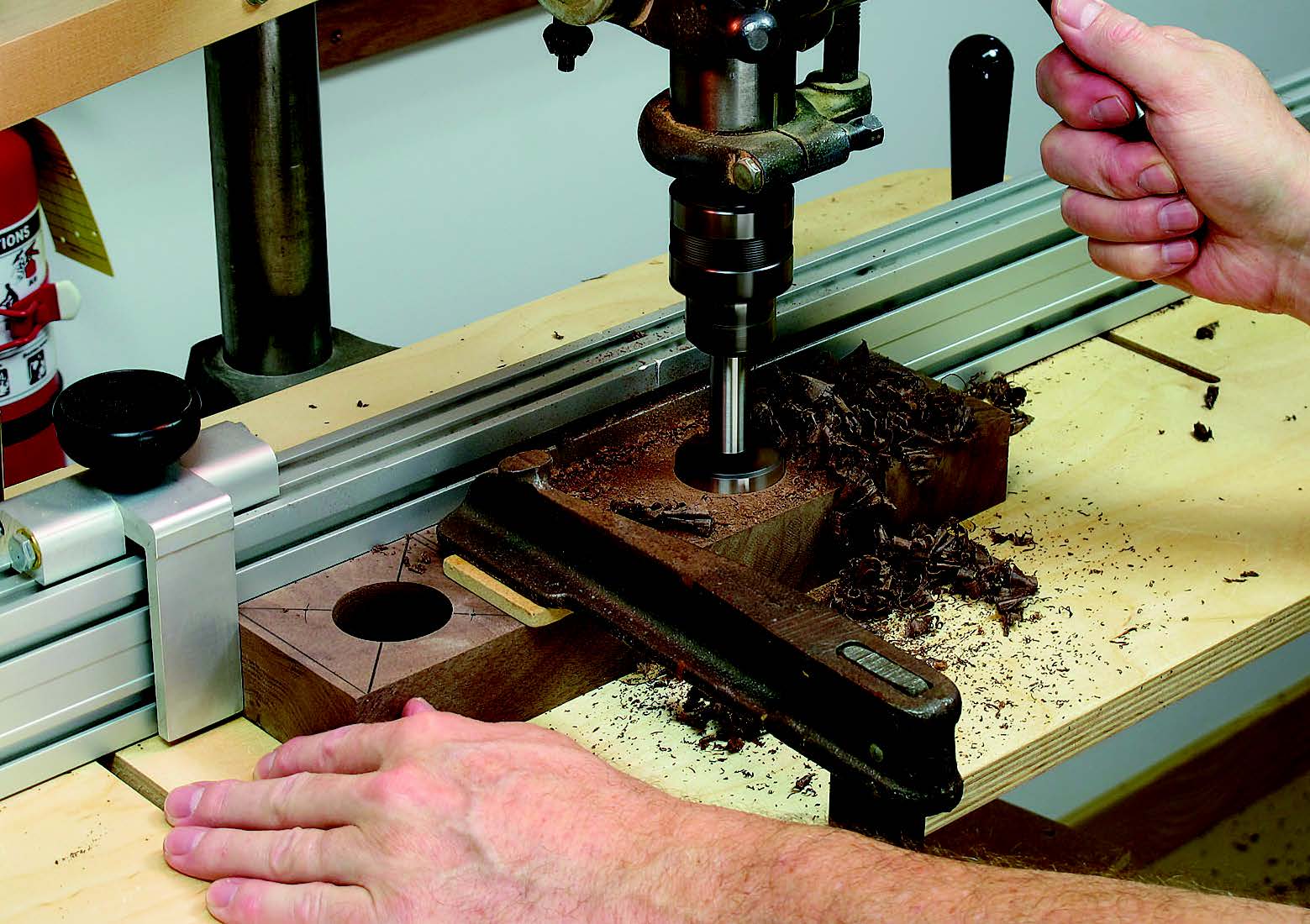
This woodworker is building his own drill press table and has a list of features for possible inclusion. He wants to know which of the following are most important: split fence, fence stop, dust collection, table tilt adjustment, vertical table, table extensions?
Michael Dresdner: My own drill press table will rotate 360 degrees, which means it also doubles as a vertical table for end boring. I have a pop-on table that acts as a table extension. Now that you mention it, the only other thing on your list that I might add is a flip-up fence stop. That would indeed be handy. Of course, all this depends on the type of work you do, but I suspect you know that already. Sounds like a great project!
Rob Johnstone: The short answer to which features are most important is “all of the above.” If I am going to spend the time to create a piece of tooling that has a goal of general use (as opposed to tooling built for a specific task), I want it to be as flexible as possible. So a split fence with indexable flip-up stops would be a must. Angle drilling is important as are table extensions. A good way to clamp stock in place while doing multiple operations is something that comes to mind as a time-saver as well. Let’s face it, designing the features and coming up with clever ways to achieve those goals is one of the very satisfying aspects of our hobby. As an aside, it is interesting to me that there are really very few good commercially available drill press tables. The only really substantial offering on the market to date is the Rockler model.
Rick White: I’m inclined to agree with Rob on this one since I helped design the Rockler drill press table. Here are two other features of that table that I’m glad were included. Putting dust collection at the fence level was important and having a replaceable insert in the table was very useful in my opinion. Make sure your table will be big enough, without extensions, because I’ve found that a large table is more important than I originally imagined. And definitely include the stop blocks.
Ian Kirby: I’ll take this one feature-by-feature:
Split Fence: I’m hard pressed to know when you would need a split fence on a drill press, unless I’m misunderstanding and he means something other than the kinds of split fences you use with a router table or jointer heads.
Flip-up Fence Stops: These are useful. The usual alternative is a dead stop along with ‘length’ blocks to position the subsequent holes.
Dust Collection: There are more chips and chunks than dust from most drilling operations, but whenever you can collect it at the source, it’s a good idea. The design difficulties seem to me to be considerable, so I wouldn’t make this a high priority.
Tilt Table: This is useful but rarely used. Angle drilling can be accomplished by clamping the work to a supplementary angled bed.
Vertical Table: This gives you a ‘new’ machine ? with it you can do the work normally done on a horizontal borer. This feature opens up a new arena of dowel joinery for you. This looks like a ‘best buy’ to me.
Table Extensions: Always useful.
Ellis Walentine: I confess I never sat down and designed a special, all-purpose table for my drill press, although over the years I probably made up hundreds of jigs to do just about every kind of drilling operation. I figured that as soon as I reached a firm decision about which features to include in a dedicated table, I’d run into a job that required something else. Of the features listed in the question, though, the two that would interest me most would be dust collection and a tilting table. The floor around my drill press always seemed to be ankle-deep in chips and spiral shavings. And, when the job calls for an angled hole, the tilting feature is a godsend. If possible, make it so you can tilt it all the way to 90 degrees for end-boring operations.
A fence with a flip-up stop would be nice, but a split fence might be fussy to keep aligned. A dedicated fence also begs the question of how high to make it. I like fences that pivot at one end so you can swing the other end out to the precise spacing you need. They’re quick to make, at any height. For those rare occasions when the fence interferes with the cut, you can easily make up a specialized, sacrificial fence.
If you can figure out how to make table extensions that won’t put too much stress on your drill press, by all means make them, too. You might find that a long, adequately structured table is pretty heavy to lift up and down unless your drill press has a sturdy rack-and-pinion mechanism. You might be better off making an extension table that mounts on the column and adjusts independently of the regular table.





